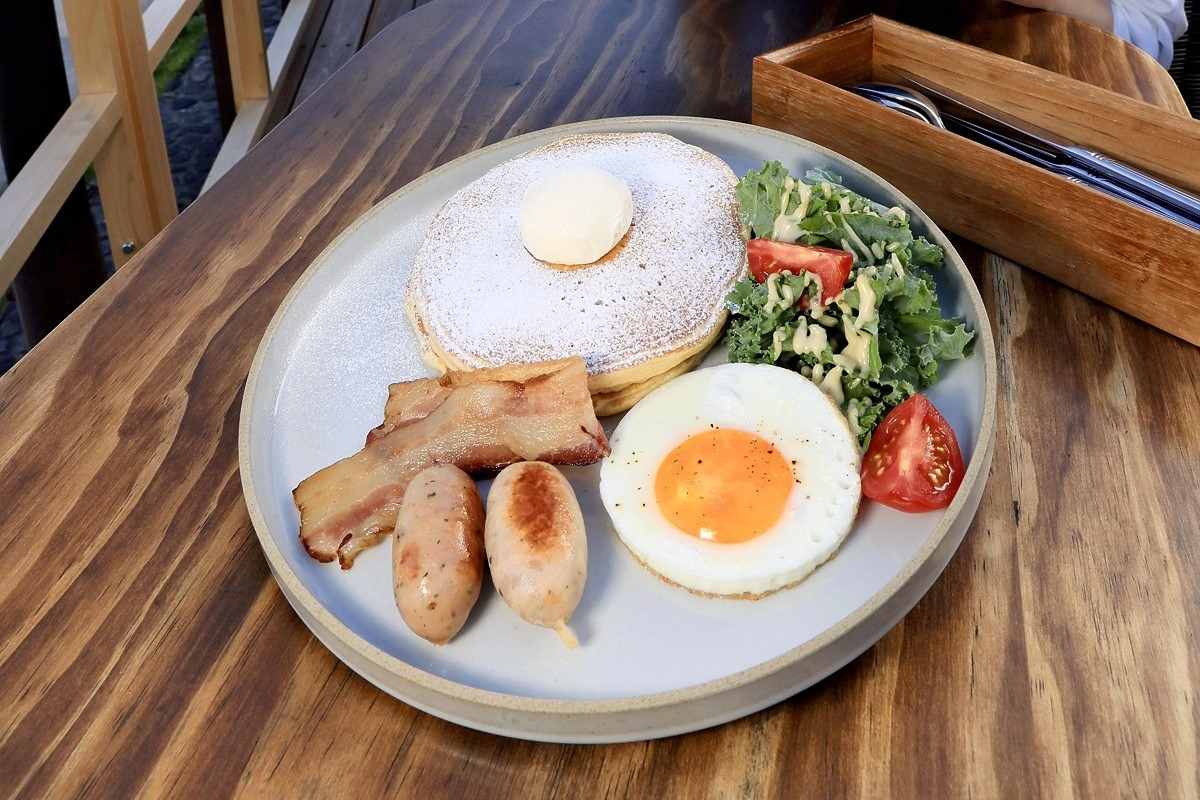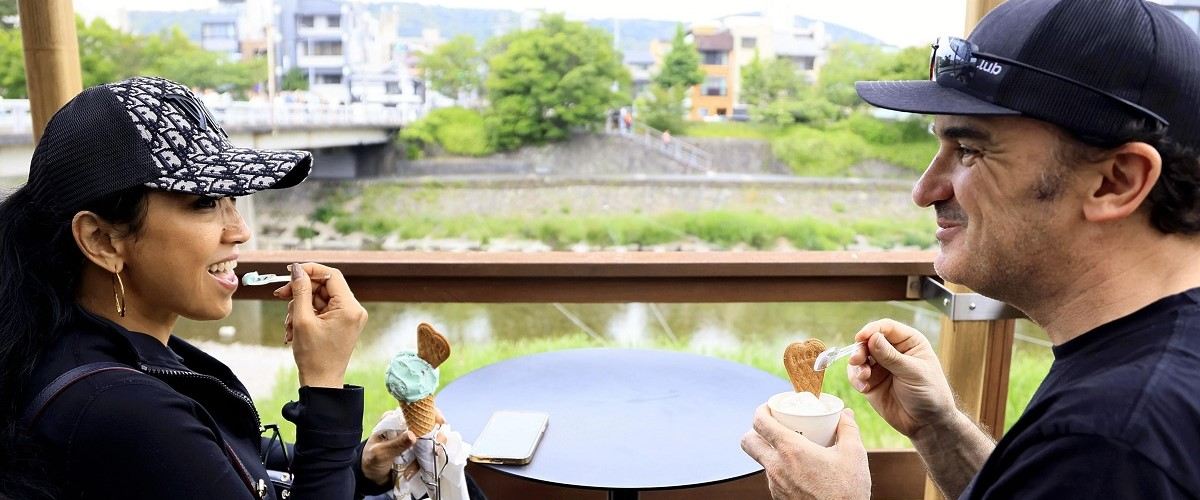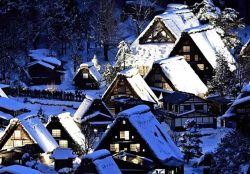Kyoto’s Riverside Dining Decks Offer Gelato, Breakfast; Restaurants with Noryo Yuka Diversifying Amid Overseas Tourist Boom


A breakfast dish served at a restaurant with riverside terrace seating in the Shimogyo Ward, Kyoto.
13:27 JST, July 8, 2024
KYOTO — Although Japan’s former capital boasts numerous tourist attractions, Noryo Yuka, summertime terrace seating along the Kamo River, stands out as one of the most classic seasonal symbols.
The riverside deck area stretches about two kilometers along the Kamo River from Nijo Ohashi bridge to Gojo Ohashi bridge and once served as balconies for ryotei Japanese restaurants and ryokan inns. But recently a variety of shops have breathed new life into the area in tandem with an increase of inbound visitors. The shops serve everything from gelato and breakfast, attracting many tourists who come to feel the traditional culture.
Keeping cool above riverbank
“The breeze along the Kamo River is pleasant and the verdant view from here is wonderful. This is a great place to feel the atmosphere of Kyoto,” said Matt Nichols, 47, a tourist from Singapore, eating gelato on the balcony seating in late May.
Babbi Gelateria Kyoto has seen an influx of international customers since last year when the COVID-19 pandemic settled. Half of its customers have been foreign tourists so far this year.
“Our Uji green tea flavor is popular,” said Mari Shibuya, the shop’s 41-year-old manager. “I think inbound visitors are also drawn to the unique experience of keeping cool above the riverbank.”
The origin of Noryo Yuka dates to the Azuchi-Momoyama period (1568-1600). By the Edo period (1603-1867), roughly 400 teahouses are said to have been packed together above the riverbank. The area was closed during World War II but reopened in 1951.
Around 60 years ago, geisha and maiko entertained patrons as they dined on Kyoto cuisine on Noryo Yuka belonging to high-end ryokan inns and ryotei restaurants. But eateries such as cafes and French bistros have popped up over the past 20 years.
This year, 90 establishments have terrace seating open from May to September in four riverside areas, including Pontocho and Shimo-Kiyamachi, according to the Kyoto Kamogawa Noryo Yuka Association.
Recently, more restaurants have set up tables and chairs for overseas visitors to sit comfortably, as opposed to a traditional sitting in which customers sit cross-legged or seiza style at low tables.

Tourists enjoy gelato on riverside terrace seating in Kyoto’s Shimogyo Ward.
Shops open during daytime
Restaurants with riverside terrace seating used to only be open at night. However, the COVID-19 pandemic caused a dip in tourist numbers, leading the association in 2021 to allow daytime hours.
Kacto, which opened last February, serves pancakes and hamburgers and opens 8 a.m.
International tourists who explore Kyoto in the early morning to avoid daytime crowds often come to the shop, and its 30 seats on its dining deck are sometimes full even on weekdays.
The restaurant’s employees have received English training to help serve customers. “Customers love spending a luxurious morning relaxing near the Kamo River,” said Yui Miyamoto, a public relations official.
According to the Kyoto City Tourism Association, inbound tourists accounted for 70.1% of total visitors this April, a record high since the survey began in 2014. Many are from the United States, China and Australia.
A guideline based on Kyoto’s Kamo River ordinance is in place to ensure that the diversification of restaurants does not spoil the cohesiveness of the dining decks. Many details are stipulated in the guideline — floors and railings should be made of wood, signboards are banned, light bulbs be warm colors and the height of floor level difference between neighboring stores must not exceed 50 centimeters.
“Noryo Yuka doesn’t just mean riverside terrace seating. It boasts Kyoto’s 400 year-history of culture,” said Hiroshi Tanaka, 68, the association’s director. “Since overseas tourists are paying attention to the terrace seating, we are committed to preserving Kyoto’s unique elegance.”
Related Tags
"Features" POPULAR ARTICLE
-

Students Recreate 19th-Century Bento Boxes Made for Ino Tadataka’s Survey Team in Hot Spring Town on Nakasendo Road
-

Santa Claus Delivers Christmas Presents to Penguins at Aquarium in Japan’s Nagasaki Prefecture
-

Sumo Restaurant in Tokyo Teaches Foreign Visitors About the Ancient Sport, with Bouts Between Retired Rikishi
-

Autonomous Passenger Ship Connects Mainland with Remote Island in Seto Inland Sea; World’s 1st Commercially Operated Autonomous Vessel
-

Japanese Chef of Italian Restaurant in Tokyo Offers Milanese Risotto; Bright Colors, Rich Flavors in Simple Steps
JN ACCESS RANKING
-

Japan Govt Adopts Measures to Curb Mega Solar Power Plant Projects Amid Environmental Concerns
-

Core Inflation in Tokyo Slows in December but Stays above BOJ Target
-

Major Japan Firms’ Average Winter Bonus Tops ¥1 Mil.
-

Bank of Japan Considered U.S. Tariffs, Coming Shunto Wage Hike Talks in Its Decision to Raise Interest Rates
-

Tokyo Zoo Wolf Believed to Have Used Vegetation Growing on Wall to Climb, Escape; Animal Living Happily after Recapture






























